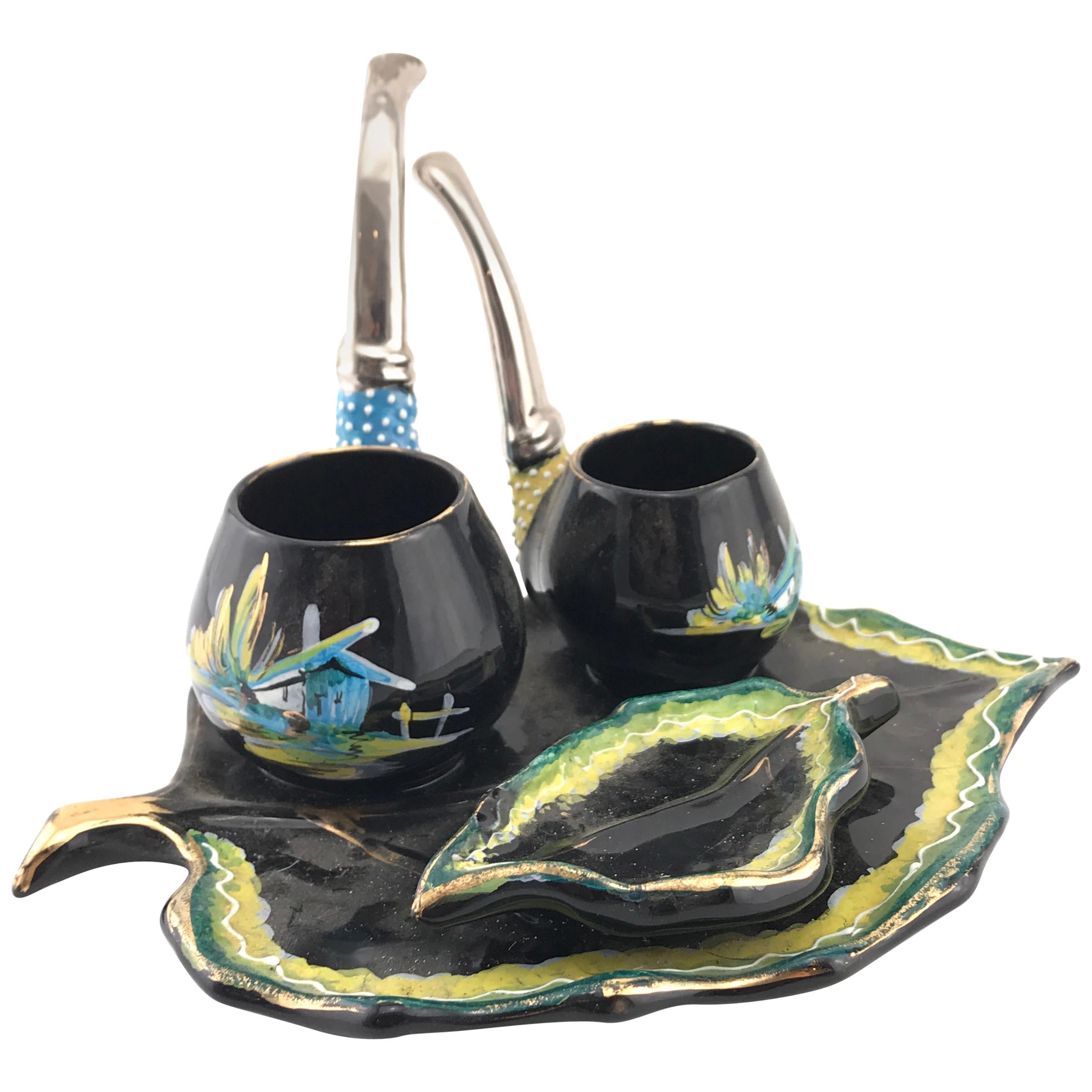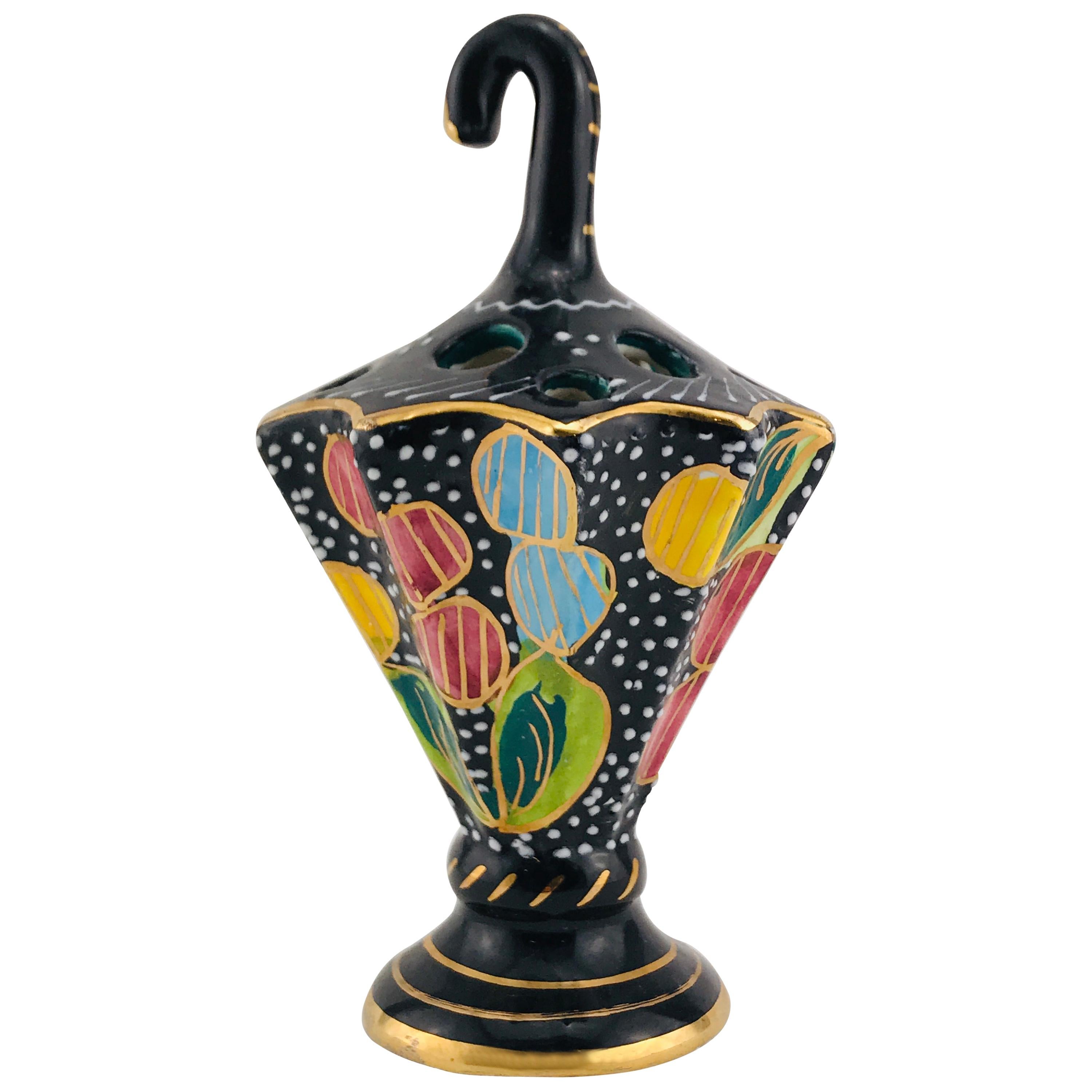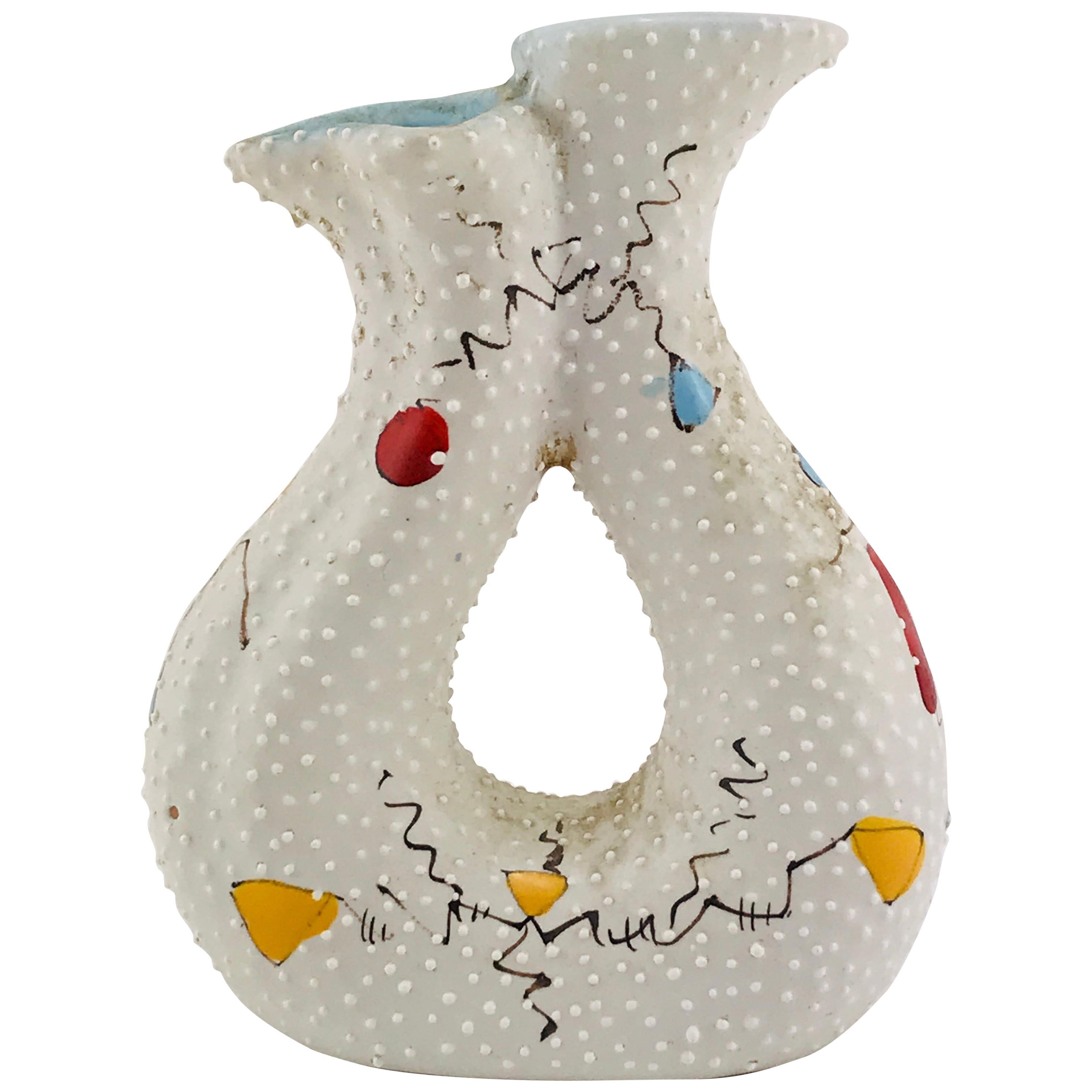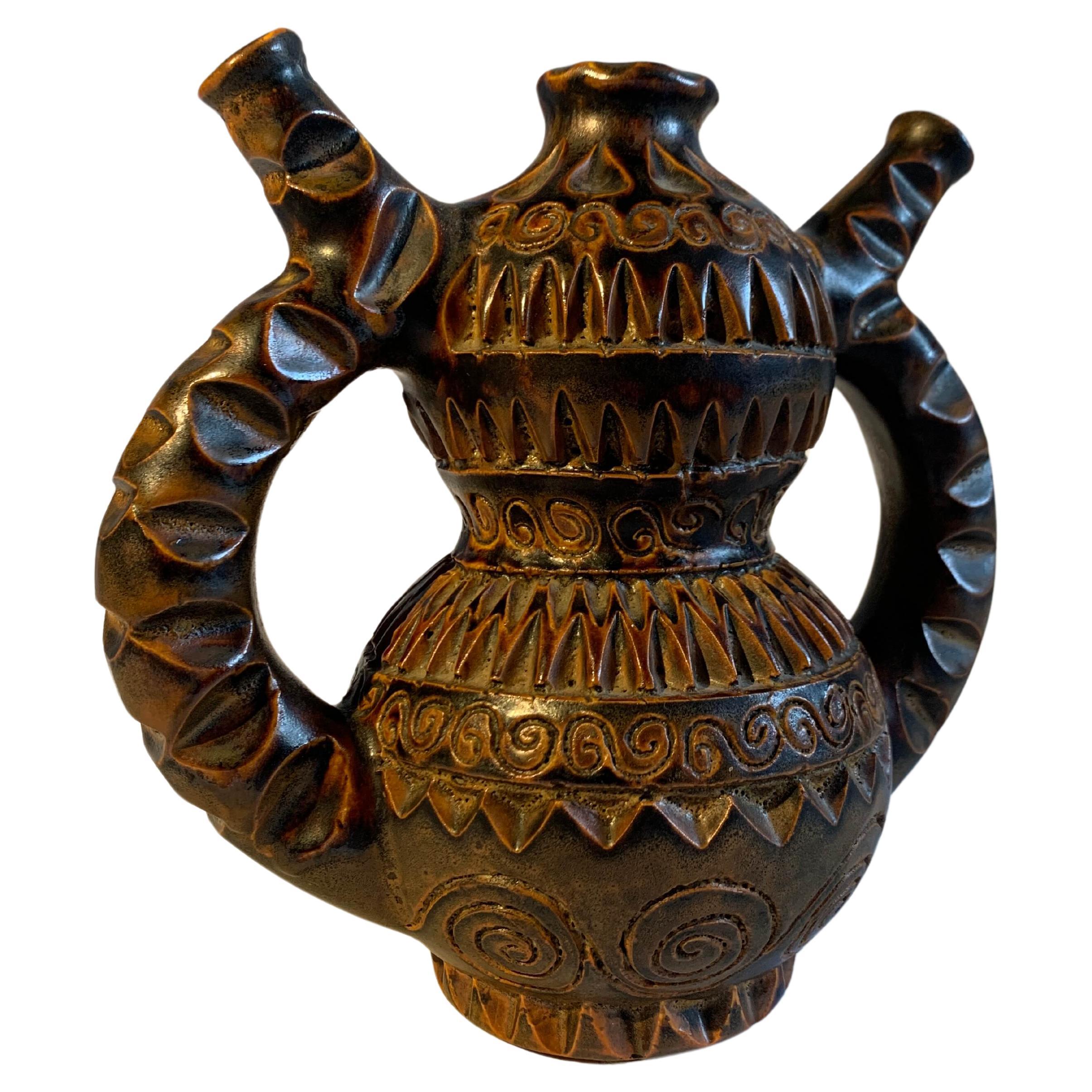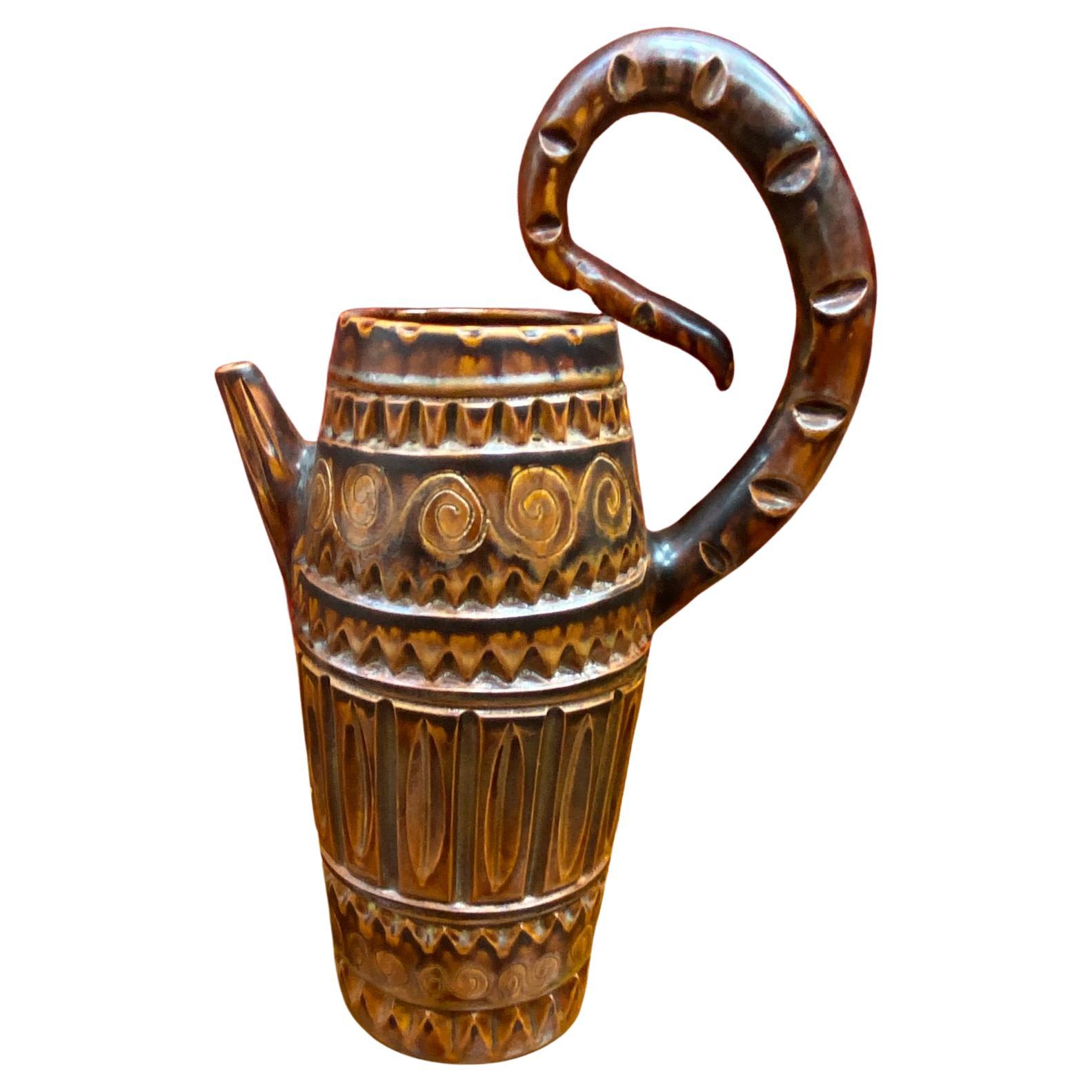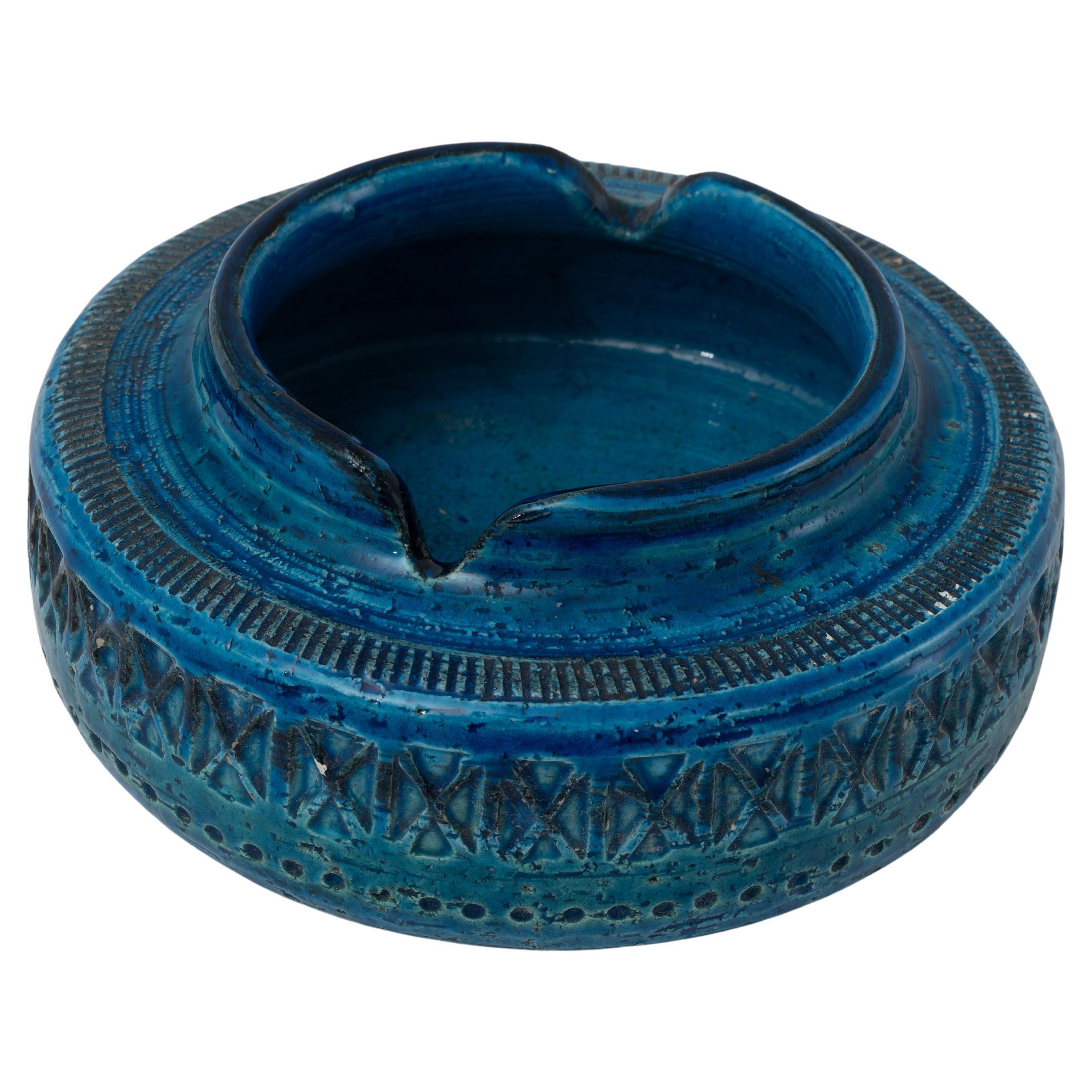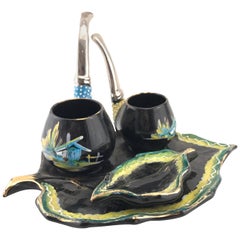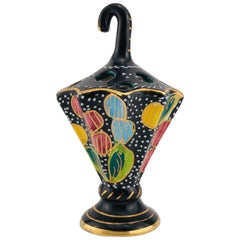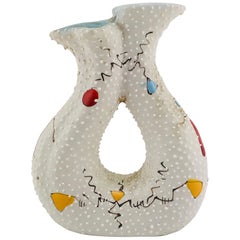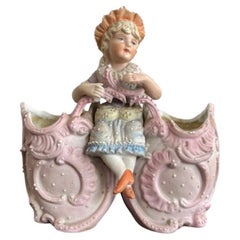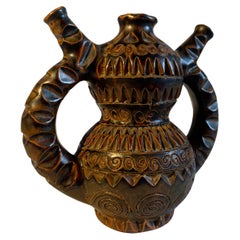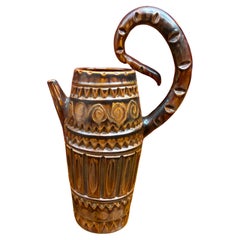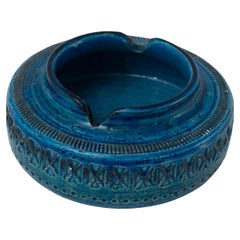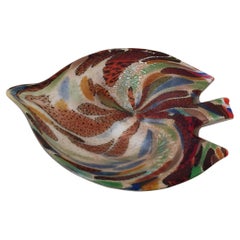Items Similar to Italian Midcentury Decorative Ceramic by Osvaldo Gualdo Dolci, 1950s
Video Loading
Want more images or videos?
Request additional images or videos from the seller
1 of 10
Italian Midcentury Decorative Ceramic by Osvaldo Gualdo Dolci, 1950s
$700
£531.14
€607.32
CA$977.71
A$1,087.08
CHF 567.61
MX$13,232.42
NOK 7,242.50
SEK 6,785.88
DKK 4,532.51
Shipping
Retrieving quote...The 1stDibs Promise:
Authenticity Guarantee,
Money-Back Guarantee,
24-Hour Cancellation
About the Item
Osvaldo Gualdo Dolci was an Italian ceramic artist known for his contributions to midcentury decorative ceramic design. He was born in 1917 in Rome, Italy, and began his career as a painter. However, he soon shifted his focus to ceramics and established his own studio, where he started experimenting with various techniques and designs.
In the 1950s, Dolci gained significant recognition for his innovative approach to ceramics, which blended traditional craftsmanship with modern aesthetics. His works from this period often featured vibrant colors, geometric patterns, and abstract motifs, reflecting the artistic trends of the midcentury era. He created a wide range of decorative objects, including vases, bowls, figurines, and plates, all of which showcased his unique style.
Dolci's ceramics are highly sought after by collectors and enthusiasts of midcentury design due to their artistic value and historical significance. His pieces are known for their craftsmanship, quality, and timeless appeal. While some of his works might bear his signature, others may be identified by the distinct style and design elements characteristic of his creations.
Collectors and admirers of midcentury decorative ceramics often appreciate Osvaldo Gualdo Dolci's contributions to the art form, as he played a significant role in shaping the aesthetic of the time.
- Creator:Gualdo Dolci (Maker)
- Dimensions:Height: 5.91 in (15 cm)Width: 9.45 in (24 cm)Depth: 7.09 in (18 cm)
- Style:Mid-Century Modern (Of the Period)
- Materials and Techniques:
- Place of Origin:
- Period:
- Date of Manufacture:1950s
- Condition:
- Seller Location:Byron Bay, AU
- Reference Number:1stDibs: LU4258235586942
About the Seller
5.0
Vetted Professional Seller
Every seller passes strict standards for authenticity and reliability
Established in 2017
1stDibs seller since 2018
62 sales on 1stDibs
Typical response time: 1 hour
- ShippingRetrieving quote...Shipping from: Byron Bay, Australia
- Return Policy
Authenticity Guarantee
In the unlikely event there’s an issue with an item’s authenticity, contact us within 1 year for a full refund. DetailsMoney-Back Guarantee
If your item is not as described, is damaged in transit, or does not arrive, contact us within 7 days for a full refund. Details24-Hour Cancellation
You have a 24-hour grace period in which to reconsider your purchase, with no questions asked.Vetted Professional Sellers
Our world-class sellers must adhere to strict standards for service and quality, maintaining the integrity of our listings.Price-Match Guarantee
If you find that a seller listed the same item for a lower price elsewhere, we’ll match it.Trusted Global Delivery
Our best-in-class carrier network provides specialized shipping options worldwide, including custom delivery.More From This Seller
View AllItalian Midcentury Decorative Ceramic by Osvaldo Gualdo Dolci, 1950s
By Gualdo Dolci
Located in Byron Bay, NSW
Incredible ceramic by Osvaldo Gualdo Dolci from, Italy, 1950s.
Category
Vintage 1950s Italian Mid-Century Modern Ceramics
Materials
Ceramic
$675 Sale Price
25% Off
Mid-Century Modern Italian Ceramic by Cima Deruta, 1950s
By Cima
Located in Byron Bay, NSW
Beautiful ceramic by Cima (Italy) probably design as pens holder, amazing colours and in very good condition.
Category
Vintage 1950s Italian Mid-Century Modern Ceramics
Materials
Ceramic
$480 Sale Price
20% Off
Italian Midcentury Ceramic Vase by Gualdo Dolci, 1950s
By Gualdo Dolci
Located in Byron Bay, NSW
Beautiful vase by Gualdo Dolci also signed Rappallo a place in Italy famous for their beautiful ceramics in 1950s.
Category
Vintage 1950s Italian Mid-Century Modern Ceramics
Materials
Ceramic
$420 Sale Price
30% Off
Italian Hand Made Ceramic 1970
Located in Byron Bay, NSW
Italian hand made ceramic
Category
Vintage 1970s Mid-Century Modern Ceramics
Materials
Ceramic
Italian Hand Painted Ceramic 1960s
Located in Byron Bay, NSW
Italian 1960s Hand Painted ceramic vase.
Signed ceramic by AT serial number 3969.
Hand spited stripes and yellowed and blue decorations.
Category
Vintage 1960s Italian Mid-Century Modern Ceramics
Materials
Ceramic
Italian Gualda Docci Handmade Ceramic 1970s
Located in Byron Bay, NSW
Italian handmade ceramic please refer to photos for condition as one on the horn is broken hence this price
Category
Vintage 1970s Italian Mid-Century Modern Ceramics
Materials
Ceramic
You May Also Like
Bessone Vallauris ceramic
By Huguette Bessone
Located in L’ISLE-SUR-LA-SORGUE, FR
Interesting enameled ceramic from the Belle Epoque of Vallauris.
Unique piece in very good condition, signed.
artist : Huguette Bessone (1929- )
Signed, perfect condition.
France,...
Category
Mid-20th Century French Mid-Century Modern Ceramics
Materials
Ceramic
Huguette Bessone, Signed, Ceramic Vallauris, circa 1970
By Huguette Bessone
Located in Saint-Ouen, FR
Huguette Bessone, signed, ceramic Vallauris, circa 1970.
Category
Vintage 1970s French Mid-Century Modern Ceramics
Materials
Ceramic
"Rimini" ceramic ashtray by Aldo Londi, Bitossi, 1960s
By Aldo Londi
Located in Bastia Umbra, IT
"Rimini" ceramic ashtray by Aldo Londi, Bitossi, Made in Italy, 1960s.
Pretty round ashtray/emptying tray from the 1960s made of blue "Rimini" glazed ceramic. This piece was designe...
Category
Vintage 1960s Italian Mid-Century Modern Ashtrays
Materials
Ceramic
Murano, 1930, Italian, Attributed to Fratelli Toso Technical Avventurina
By Fratelli Toso
Located in Ciudad Autónoma Buenos Aires, C
Murano
Technical Avventurina :
We have specialized in the sale of Art Deco and Art Nouveau and Vintage styles since 1982. If you have any questions we are at your disposal.
Pushing the button that reads 'View All From Seller'. And you can see more objects to the style for sale.
Fratelli Toso, Venice
One of the oldest glass factories established in Murano, Fratelli Toso was founded in 1854 by six brothers who loved the art of glassmaking. With over 150 years of experience in the field, the Toso family improved their techniques and nowadays are one of the top award-winning manufacturers of Murano glass.
Technical Avventurina :
Avventurina is a Murano glass-making technique developed on Murano island in the 17th century. I was first mentioned in a document dating from 1614 as "a kind of stone with gilt stars inside", at which point it already mesmerized people with the unusual and attractive look. The technique owes its name to the fact that its discovery happened by chance thanks to a lucky coincidence, when a glass artisan is said to have accidentally dropped some metal shavings into the glass mixture. Italians say it happened "all'avventura", which in Italian means "by chance".
The first documented recipe for the technique dates from 1644, when Murano master glassmaker Giovanni Darduin described how Avventurina glass should be created. The recipe involves adding various metal oxides such as copper and iron to the hot glass mixture, which will cause tiny particles of the metals to crystallize as the glass mixture cools off.
Complicating the process, for such crystallization to occur the furnace had to get fully extinguished, and the metal particles would slowly separate from the glass base over a few days during the natural cooling of the glass. This was a very difficult process from a logistical perspective, since every time a glass furnace got extinguished it caused work to be paused, and re-igniting it was quite a big process, as it took time to fully heat it to the desired temperature.
As industrial revolution set foot on Murano in the nineteenth century, the process got a remake. Large volumes of fine Avventurina paste were made and then skillfully stretched into glass canes, which were then re-melted for jewelry-making under a small flame, or for glass blowing. This Avventurina paste received worldwide acclaim and re-ignited the fame of Murano Glass workshops due to its use in Salviati mosaics...
Category
Vintage 1930s Italian Art Deco Centerpieces
Materials
Murano Glass
Weiss. Modern Brazilian ceramics, c. 1950
By Weiss
Located in PARIS, FR
This modern Brazilian ceramic vase, dating from about 1950, bears the signature "Weiss" under its base with the numbers: 512M-077-810-818- Brasil / Weiss. It is made of enamelled cer...
Category
Mid-20th Century Brazilian Mid-Century Modern Ceramics
Materials
Enamel
Marcello Fantoni - Sculptural Blue Glazed Ceramic Bowl - Florence - 1950s
By Marcello Fantoni
Located in Milano, IT
Marcello Fantoni, artistic ceramics, ceramic sculpture, 1950s Italian design, Tuscan art, blue glaze, Fantoni bowl, Italian modernism, Florence, vintage ceramics
Marcello Fantoni, c...
Category
Mid-20th Century Italian Mid-Century Modern Ceramics
Materials
Ceramic
